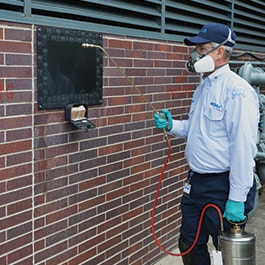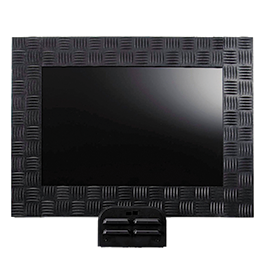
Ecolab’s Large Fly Program Reduces the Number of Large Flies in Quick Service Restaurants by 49%
Background
In many quick service restaurants, flies congregate near the dumpster and may enter the restaurant through open doors or the drive-thru window. Flies are not only a nuisance to diners; they can be a food safety risk as they are known to harbor over 100 pathogens1 with the potential to transmit and cause human disease anywhere they land.
Situation
To assess the benefit of the Ecolab Large Fly Program compared to Fly Lights, one customer selected four restaurants to use for a test. In all four of their restaurants, two interior fly lights were installed, a pre-test survey was administered and baseline data was collected for three weeks. At the start of the first week, two of the restaurants received the full Ecolab Large Fly program with inspections and recommendations, exterior and interior treatments along with exterior and interior equipment. The remaining two restaurants served as control locations with only interior fly lights for tracking purposes. At the end of each week, the total number of flies caught in the interior of each restaurant was counted.This case study demonstrates that a robust outside-in approach combined with a customer partnership reduce a large fly population better than a fly light alone and helps prevent interior fly activity.

Solution
In the restaurants with the Ecolab Large Fly program, the Ecolab Service Specialist completed an interior and exterior inspection and then made recommendations that would help the restaurant limit fly entry. Next, an exterior treatment was performed in key exterior areas such as the dumpster corral and near the back door to reduce the fly population. The STEALTH™ Fly Station was installed in the dumpster corral, attracting flies and eliminating them on the exterior before they were attracted to the restaurant. On the interior, targeted interior spot treatments were made to key fly resting areas and STEALTH™ Fly Lights were installed in the customer dining area and the back of house to help quickly eliminate any flies that did enter the restaurant
Results
In the first week, the restaurants with the Ecolab Large Fly program saw an 8% increase in the number of flies caught. This was, however, much lower than the 44% increase seen in the number of flies caught in the control restaurants. This suggests that the overall fly pressure was increasing at this time and the Ecolab Large Fly Program helped mitigate the impact of the increasing fly pressure.
In the second week, exterior pressure continued to build with the number of flies increasing by 68%. Again, the stores on the program saw the number of flies caught in their restaurant decrease by an average of 25%.
By the third week, the fly pressure dropped by an average of 8% in flies caught in control restaurants. The program restaurants continued to outperform the control restaurants with an average decrease of 49% in the number of large flies caught in the restaurant
Test Accounts: Percent of Large Flies Caught
Week 1
8% increase in large flies caught in the restaurant
Week 2
25% decrease in large flies caught in the restaurant
Week 3
49% decrease in large flies caught in the restaurant
Control Accounts: Percent of Large Flies Caught
Week 1
44% increase in large flies caught in the restaurant
Week 2
68% increase in large flies caught in the restaurant
Week 3
8% decrease in large flies caught in the restaurant
The quantitative results are supported by survey responses in which restaurant operators using the full Ecolab Large Fly Program report increased satisfaction with control of large flies in their restaurant. Control restaurants that only had the interior fly light remained unsatisfied with the control of large flies in their restaurant.

